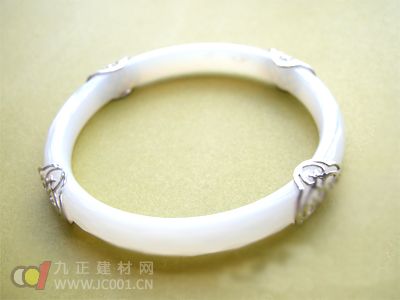Introduction of opal
Opal is a naturally occurring, hardened silica gel that contains between 5% and 10% moisture. Unlike most gemstones, which have a crystalline structure, opal is amorphous, meaning it lacks a defined internal structure. This makes it prone to drying out and cracking over time if its moisture content decreases. In mineralogy, opal is classified as a gemstone known for its color-changing effect, also referred to as "play of color." It is essentially an aqueous form of amorphous silica, with the chemical formula SiO₂·nHâ‚‚O. According to the GIG Research Report, opal—commonly known as "opal" in English—is a hydrated form of silica. Its amorphous nature means it doesn’t have a fixed shape or crystal system. The fracture pattern is typically shell-like, and it forms through the precipitation of colloidal silica. When this process occurs within organic remains, such as tree trunks, it can create what is known as "tree jade." Similarly, when silica precipitates in the shells of mollusks like conch, it results in "spiral jade," a rare variety found mainly in Hainan. Locals often refer to it as "snail fossil" or "sea jade," and it is extremely rare due to its limited occurrence. The refractive index of opal ranges from 1.37 to 1.47. This value is influenced by the water content in the stone—higher moisture levels lead to a lower refractive index. Hardness: 5.5–6.5 on the Mohs scale Density: 2.15–2.23 g/cm³ Opal typically has a white or translucent appearance. When impurities like iron, calcium, magnesium, or copper are present, it can display a wide range of colors. Opal usually exhibits a glassy or waxy luster, but if the luster changes depending on the viewing angle, it becomes highly valuable. Otherwise, it is considered more of a decorative stone rather than a precious gem. Opal can occur in various textures, including dense, granular, earthy, stalactitic, tubercular, and porous forms. Its internal structure often appears spheroidal, and the aggregates may resemble grapes or stalactites. The background color can be black, milky white, light yellow, or orange, and the stone is generally translucent to slightly transparent. It can exhibit a glassy, pearly, or even protein-like luster, and many types display a striking color change effect. Opal is brittle and susceptible to drying out, with a shell-like fracture. Under long-wave ultraviolet light, different varieties of opal may emit varying fluorescence patterns. There are two main types of opal: precious opal and common opal. Precious opal is distinguished by its ability to display a "color flash" or "play of color" when viewed from different angles. This effect is caused by the arrangement of tiny silica spheres within the stone, which diffract light and create a rainbow-like spectrum. Larger spheres result in a broader range of colors, making these stones highly sought after. The quality of precious opal is evaluated based on factors such as base color, color play, structural integrity, and the quality of cutting and polishing. Polycarboxylate Superplasticizer For example, self-consolidated concrete and slump retention beyond two hours without significant set time extension have been made possible with PCEs. I was fortunate to be on the R&D/marketing team for a major chemical admixture company that launched the first group of polycarboxylate-based admixtures in the 1990s. Like all new technologies introduced into the building industry, there has been a long learning curve which underscores the highly diverse set of materials and applications with concrete construction. This article summarizes a few key performance attributes which have been learned from both commercial concrete applications and the research laboratory. Some of the benefits provided by polycarboxylate superplasticizers have been discussed and previously published in The Concrete Producer. The term “polycarboxylate” actually applies to a very large family of polymers, which chemists can design to impart a special performance to concrete mixtures. Subsequent to the introduction of so-called general purpose PCE superplasticizers, new PCE products have been developed especially designed to provide high early strength and different levels of slump retention, as well as provide different capabilities to manage air contents in concrete. One such class of polycarboxylates has little impact on initial slump, but because of a time-release function built into the PCE polymer, concrete slump increases generally in a predictive manner as a function of mixing time (see Figure 1). Thus, such a product can be added at various dosages to an already admixed concrete to dial in slump retention as a function of job conditions (haul time, temperature, delay before discharge, etc). Very often, a superplasticizer will be formulated with a blend of two or more PCEs to achieve a combined performance of both early strength and long slump life. Researchers will continue to actively manipulate PCE polymer structure to meet the ever changing material and construction requirements. This remarkable strength difference, obtained by merely changing the superplasticizer type from a PNS to a polycarboxylate, was verified from a scientific study, and can be useful in reducing cement contents while still meeting strength specifications. Interestingly, the strength difference does not seem to be associated with increased heat of hydration, but rather is related to a denser microstructure produced by the combination of a calcium-based accelerating or corrosion-inhibiting admixture and polycarboxylate-based admixture. The PCE superplasticizer replaced both the PNS/lignin and Type A water-reducing products at about one-third the dosage rate. Also, note the 50% drop in AEA dosage rate with the PCE admixed concrete to obtain the same air content. To summarize, though the concrete industry has learned much about harnessing the versatility and understanding the limitations of PCE-based superplasticizers, chemists, working with concrete technologists, will continue to modify the polymer structure to achieve new capabilities for the production, placement and service life of concrete mixtures. by-Ara PCE based plasticizer Shanghai Hongyun New Construction Materials Co., Ltd , https://www.hongyunpce.com
The Polycarboxylate Family
